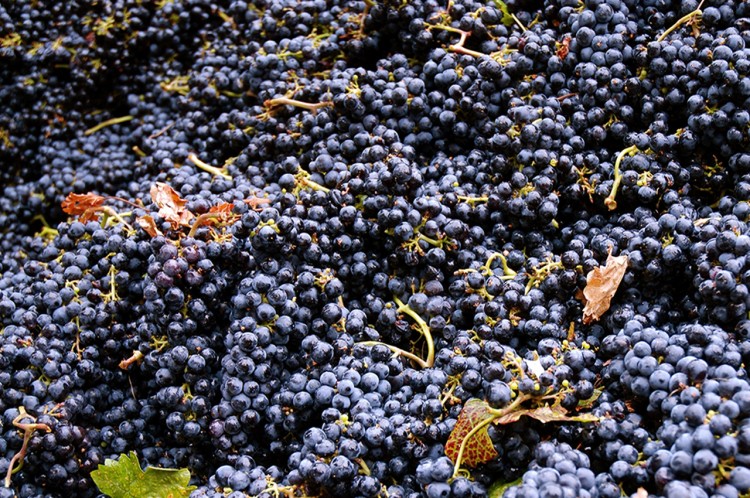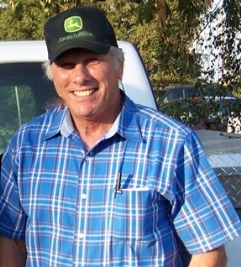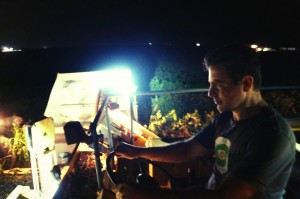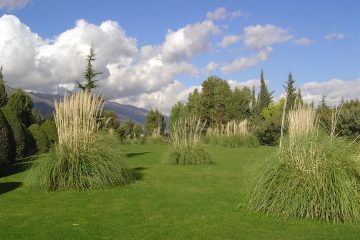Where the Rubber Meets the Road: Harvest in the Central Valley

It’s August. Depending on one’s position in the wine world, people are either taking vacation, touring wineries, furiously trying to bottle whatever is in tank to clear up space for the vintage soon to come, preparing for harvest, or, in the case of so many young sommeliers: making plans to work harvest in some romantic locale, under the personal invitation of some dashing winemaker or other. It sounds cool, a combination of hands-on education, hard work, bonding with an icon of the wine world who will no doubt offer plenty of cred while traversing those dangerous alleys between tables of very expensive restaurants.
No, no, no. Not fair. Having never worked a harvest in Europe (though, visiting Domaine des Comtes Lafon on a cold morning in early November, 2005, Dominque Lafon asked if I – as well as two other visiting American journalists – would be interested in picking some Chardonnay still hanging in the Mâcon that he wanted to harvest that afternoon to make a vendages tardives wine. For some reason, I declined – I think I wasn’t dressed properly – much to my later regret. I could have become buddies with one of Burgundy’s finest winemakers! Or, have surely gotten a rare bottle of Lafon sticky.). Of course, I cannot really speak to anyone’s particular experience. However, it always did strike me as a bit precious. I mean, how much work were those New Yorkers in Burgundy/Ribera de Duero/Montalcino, etc., really doing?
I can speak, however, about my harvesting experience. Two weeks ago I was in California’s Central Valley to deliver the keynote speech at Fresno State University’s Grape Day. (More about that in a later post.) The evening after my speech, I had dinner at a superb Middle Eastern Armenian restaurant, AJ’s, with my friend Aris Janigian, a terrific, provocative novelist, now based in Fresno, and a good friend of his, Ralph Pistoresi. Ralph, happens to be one of California’s most significant grape producers, farming in the hot Central Valley thousands of acres of fruit that goes into California wines up and down the state. (Yes, even very expensive Napa wines – who are permitted to blend up to 15% of grapes grown outside Napa).

Driving Aris and me home, Ralph mentioned that he had a crew up in Madera, about 30 minutes north, harvesting Pinot Gris. (August 5, grapes ripen early in the Valley).
“Have you ever seen a mechanical grape harvester?” he asked.
The answer: only one standing still. Indeed, while I have been in hundreds of vineyards, before, during, and after harvest, they were always of the hand-picked type. Like the ones all the young somms flock to in late September.
“Well, do you want to see one in action? You gotta see one in action.”
Absolutely.
Aris, whose father grew grapes, among other things, including, it seems the first seedless watermelon in the United States, and, who, he, himself, owns a company that packages grapes for home winemakers, opted to stay home.
So, Ralph and I went north, into the coolish night (for the Valley – maybe 72 degrees), toward Madera. Though the moon was nearly full, it was dark. That is, until we saw the bright lights of the monster harvesters in the distance. We pulled off the road into what Ralph calls “a small vineyard,” 160 acres of planted in mixed varieties, passing several large trucks with even larger bins behind, all lined up to receive tons of grapes.
Ralph had three harvesters going, machines that stand about two stories tall and about a dozen feet wide, with tires five feet in diameter. One was idling for us to join it. We clambered aboard, up the steel ladder, to a platform on top where a driver sat. Below, in the center, was a set of two coils on either side of an open space wide enough to accommodate a row of vines. As the machine rolled slowly forward, the coils vibrated against the vines, shaking ripe grapes into a trough, and then to a conveyor belt monitored by workers on each side who manually pull off detritus, including stems, leaves, and anything else. No, unlike the claims in that stupid article that appeared on the Huffington Post a couple of weeks ago (since withdrawn), there were no birds or apparent insects in the mix.
The grapes, Pinot Grigio, yellow, splashed with purple, were carried up the belt, then to a sluice that transferred them over a neighboring row of vines to a large bins attached to a tractor running alongside. Remarkably, very few leaves were in the mix – or anything other so-called MOG (material-other-than-grapes).
The machine was loud, and it shook as it rolled slowly – one mile per hour – over the quarter mile long rows. With stops to make adjustments and slow turns from one row to the next, the harvester and crew were able to cover about three rows in an hour, about one acre. The yields: about six tons per acre this year, about a third less than last year’s harvest. Still, sugar levels are good – about 22 ½ brix, enough to produce a wine of 12.5%+ alcohol, if fermented dry. And, the few berries that I plucked from a passing conveyor were sweet and flavorful.

I got behind the wheel for a minute, mostly to say that I did, but I spent the majority of my time simply taking it all in: The scale, the noise, the mechanics of it all, the combined smell of machinery, workers’ sweat, and the sweet perfume of tons of ripe grapes passing before my eyes. It was one of those places where industry meets agriculture dead on. A place, where the metaphorical rubber meets the road, as Ralph put it, or more literally, where the rubber meets the fine sandy loam soils of that part of the Central Valley. To paraphrase a quote by a large Central Valley growers that journalist Jon Bonné cites in his excellent book The New California Wine, what I was taking in really was the California wine business.
Truly, it was. The grapes, it turns out, were going to the Franzia’ brother’s Bronco Wine Company, makers of Charles Shaw wines – aka, Two Buck Chuck (now $2.50 in California, $3.50 here in Manhattan). When the grapes got to the winery, there were likely processed in a way that makes it possible to sell wine at a low price. I don’t remember the last time I tasted Charles Shaw Pinot Grigio (probably at a wedding done on the cheap), but I assume it wouldn’t be the sort of wine I would be more than indifferent to. But, that’s all right. The fact is, there is a place for inexpensive wine that regular people can drink on a regular basis without worrying about cost. Sure, it’s manipulated like hell. But, so, too are a lot of rather expensive wines.
And, the wine allowed me to get on one of the coolest pieces of farm equipment out there. Fantastic.
Have a look:
